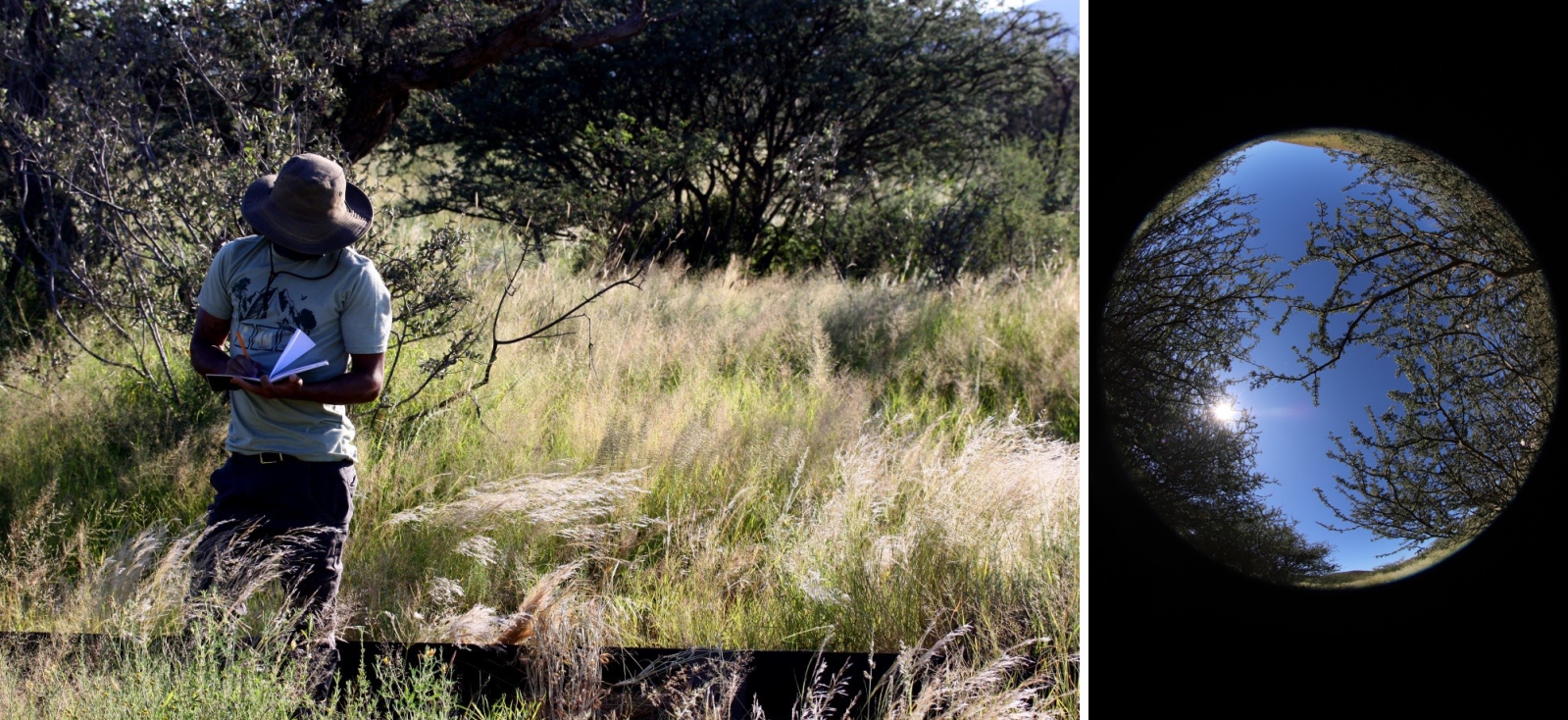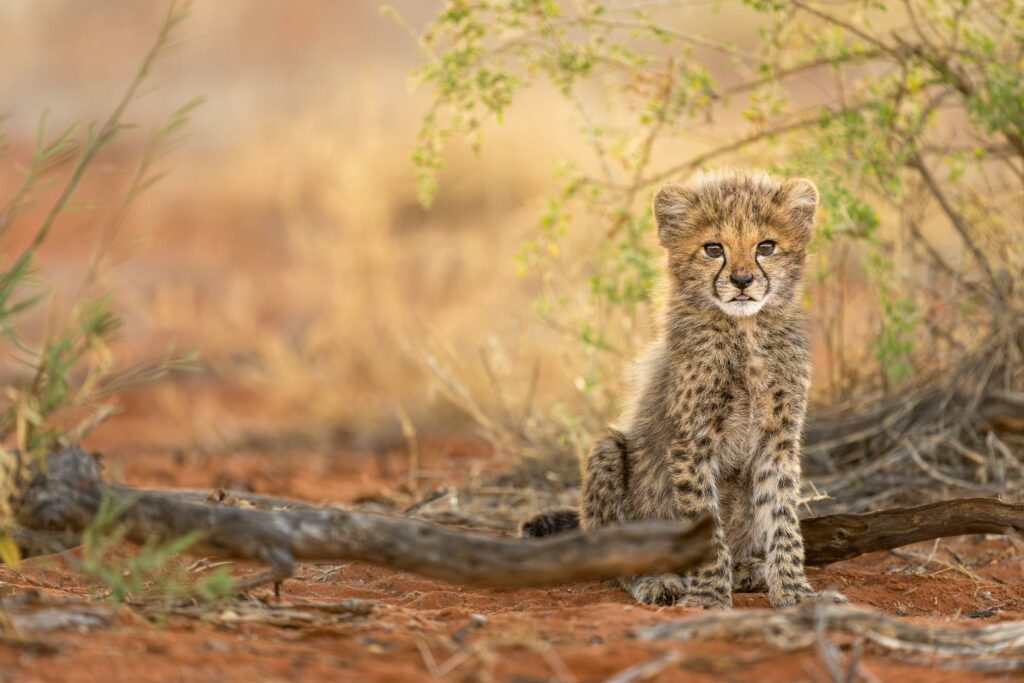REPTILE DIVERSITY AT TSWALU
In the last five years, reptile-focused research has become a mainstay at Tswalu Kalahari. The work is a collaboration between teams from the University of the Western Cape and the University of the Witwatersrand and falls under the Tswalu Foundation’s broader Kalahari Endangered Ecosystem Project. The research aims to understand which species of reptiles occur at Tswalu, how those species interact with their environment, and, ultimately, how changes to the environment impact their populations.

Sand snakes are among the most abundant snakes in the Kalahari. They prey predominantly on lizards.
IMPACT OF BLACK THORN TREE DENSITY ON REPTILES
As atmospheric CO² increases, certain plant species are better able to grow in arid environments such as the Kalahari. At Tswalu, black thorn (Senegalia mellifera) trees have begun to form dense thickets in parts of the reserve. These dense stands probably impact reptile populations in important ways and may make parts of the reserve uninhabitable for some species. PhD student Riaaz Mohamed is trying to find out exactly how different reptile species respond to changes in tree cover.
It’s still early days, but Riaaz’s preliminary results show a complex relationship between reptiles and their habitat. Tree cover does not appear to impact reptile diversity. However, as tree cover increases, some species become more abundant, while other species become less abundant.
Riaaz’s PhD work will help scientists better understand the ecology of reptiles and allow us to adapt our management strategies to ensure the long-term survival of Tswalu’s amazing reptile diversity.

Left: Riaaz Mohamed records the details of reptiles observed along the temporary fence line installed at his feet. Right: Researchers estimate the density of encroaching black thorn trees by taking photographs using a fish-eye lens.

Left: Riaaz shows off a hatchling Spotted bush snake. Centre: The Kalahari ground gecko is only found in open habitats on loose sands. Right: Although abundant, it is nearly impossible to catch a glimpse of a Spotted sandveld lizard.

A HATCHLING SHORT-SNOUTED GRASS SNAKE. POPULATIONS ARE THRIVING AT TSWALU, BUT AS THE CLIMATE CHANGES THEY MAY BECOME LOCALLY EXTINCT.
IMPACT OF CHANGING THERMAL ENVIRONMENTS ON CAPE COBRAS
Few Kalahari animals are as striking as a large, yellow Cape cobra. PhD student Thilo Beck is studying how the extreme thermal environment of the Kalahari shapes the biology of these amazing predators. Thilo wants to find out if changing thermal conditions will reduce the amount of time available to these snakes to find mates or seek food.
Thilo uses radio-transmitters and miniature temperature loggers implanted into the snakes to study their biology. With a radio receiver, he is able to track down and locate his study animals and make observations on their behaviour at the time. At the end of the study, the transmitters and loggers are surgically removed, and Thilo can go back and match his behaviour observations to measures of the snake’s body temperature and the temperature of the environment at the time.
Thilo’s research shows that extreme temperatures can drastically reduce the amount of time that cobras can spend above ground looking for food or mates. In summer, bouts of hot weather can significantly restrict their activity. As extreme weather events become more frequent, the biology of these iconic snakes will undoubtedly be impacted.

PhD student Thilo Beck uses implanted radio transmitters and thermal data loggers to link Cape cobra behaviour to environmental temperatures. Image by Mareike Dirnberger.

A Cape cobra emerges from a burrow to hunt.

Left: Sociable weavers return to their giant colony in a camelthorn tree. Right: MSc student Emma Buckley heads off to a large camelthorn tree with a Sociable weaver colony among its branches.
VALUE OF SOCIABLE WEAVER COLONIES TO REPTILE COMMUNITIES
Sociable weavers build huge thatch nest structures that dot the Kalahari landscape. Scientists have long known that Kalahari tree skinks preferentially choose trees with Sociable weaver colonies over similar trees without nests. Now, MSc student Emma Buckley is trying to find out if other species of reptiles also prefer trees with colonies in them.
Emma has confirmed the previous research by finding that Kalahari tree skinks are far more common on trees with Sociable weaver colonies than on trees without colonies. She has also taken the story further by showing that reptile diversity is much higher under trees with colonies and that Cape thick-toed geckos heavily utilize colony trees.
Emma has also found that Cape cobras prefer to forage around trees with colonies. This is because of the valuable food they gain from eating Sociable weaver chicks and eggs.

This Black spitting cobra was one of several species found under a tree with a Sociable weaver colony in it.

A Cape cobra looks down from the chamber of a Sociable weaver nest after feeding.
DISCOVERIES OF NEW REPTILE SPECIES
Researchers continue to discover species of reptiles not previously recorded at Tswalu. Last March, the team discovered that two closely related species of skinks both occur on the reserve although only one had previously been confirmed. More recently, the team added Common rough-scaled lizard to the growing Tswalu list. Time will tell which other little gems call Tswalu home without us knowing that they are here.

RESEARCHERS RECENTLY CONFIRMED THAT BOTH THE SPECKLED SAND SKINK (LEFT) AND VARIEGATED SKINK (RIGHT) OCCUR ON TSWALU.

ALTHOUGH VERY ABUNDANT FURTHER EAST, RESEARCHERS RECENTLY RECORDED THIS COMMON ROUGH-SCALED LIZARD ON TSWALU FOR THE FIRST TIME.
Images supplied by Bryan Maritz.
About the author:
For more information on reptile research in South Africa, go to maritzlab.com or follow Dr Bryan Maritz on Instagram. Reptile research at Tswalu is supported by Tswalu Kalahari, the Tswalu Foundation, the National Research Foundation, and Suzuki South Africa.

